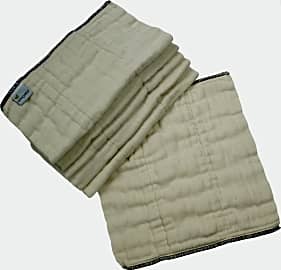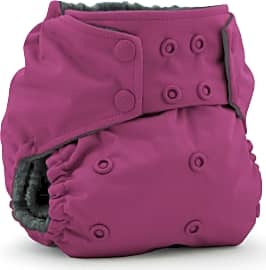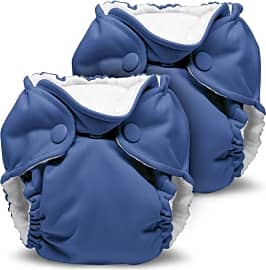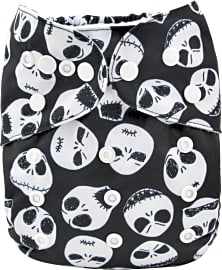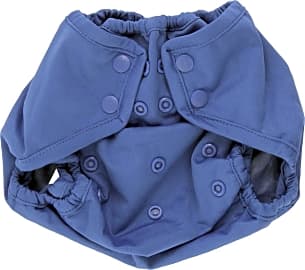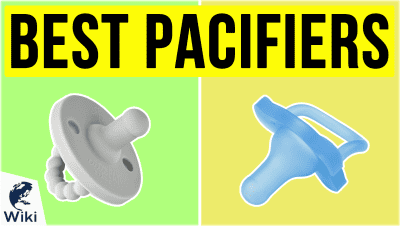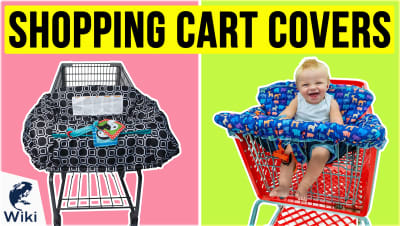The 10 Best Cloth Diapers

This wiki has been updated 38 times since it was first published in June of 2015. If your environmental responsibility extends even to the messiest of family matters, then one of these cloth diapers will be perfect for your baby. They'll keep him or her dry and comfortable without the guilt of adding more waste to landfills, plus they'll save you money in the long run. Our selection includes the best choices of every style of cloth, from prefolds to all-in-one options. When users buy our independently chosen editorial selections, we may earn commissions to help fund the Wiki.
Editor's Notes
March 26, 2020:
It may take some trial and error to find the cloth diapering system that works best for your family, and the truth is that many parents find they prefer certain styles in different situations. Once a baby starts sleeping through the night parents may choose one style for nighttime vs. their usual daytime favorite. A parent who prefers to stuff a pocket diaper, or use prefolds inside a separate cover, may find they still need some simpler all-in-ones for daycare or babysitters.
We've included the best of the all-in-ones, pocket diapers, and some cloth covers that can be paired with prefolds. In this update we also added the Oso Cozy Organic because we felt the list wasn't complete without a prefold recommendation. Most parents will have some of this style in their stash. Even if they only use these inexpensive diapers in the first few weeks, they can double as burp cloths, or extra soft, absorbent rags.
We chose to replace the EcoAble All-In-One with Rumparooz OBV. Both feature a dark lining so you won't see unsightly stains, and both have a double gusset to guard against leaks, but the inner gusset of the Rumparooz almost spans the full length of the diaper, for greater protection against blow-outs.
Don't Get Wasteful About Waste
You can expect to spend anywhere between $50 and $75 each month for your baby's first year on the planet.
Every time I think I might be ready to have kids, when I start brainstorming the perfect name, picking out paint swatches for a nursery, imagining sending them off on their first day of school, etc., all anyone has to do is say one magic word and the bubble bursts. That word? Diapers.
Disposable diapers are expensive. You can expect to spend anywhere between $50 and $75 each month for your baby's first year on the planet. Add in the powder, and the wipes, and the formula, and we're talking hundreds of dollars each month.
Not only are they costly for the consumer, they also incur a steep cost on our environment. Studies by the EPA and The Union Of Concerned Scientists show that disposable diapers make up 2.1% of all garbage in the US, 3.4 million tons' worth from nearly 18 billion diapers all stuck in landfills.
Furthermore, plenty of studies point to adverse affects to babies' health posed by the chemical bleaching and super-absorbent treatments that disposables undergo before hitting the market.
Cloth diapers, on the other hand, are much simpler in their design, and you can reuse them with multiple children or pass them along to other parents in need.
While the original cloth diapers were single cloths of linen or cotton wrapped and fastened around a baby's bottom, the cloth diapers on our list have taken a page or two out of the disposable industry's playbook. For example, each of the diapers on our list utilizes extra-absorbent washable materials, waterproof shells, and liners that you can exchange and wash.
The result is a lot less waste, and a lot more savings.
Keeping The Baby Clean In Style
It's likely that your baby won't remember the diapers he or she wore before potty training took over, but that doesn't mean you won't. Part of the appeal of the reusable diapers on our list is the fact that they're adorable. You may be tempted to make your choice about which diaper to drop your baby into based on the look of them alone, but there are certainly a few more variables to consider along the way.
Reusable diapers catch a lot of flack from the disposable industry for requiring an unsustainable amount of hot water for their reuse.
For starters, degrees of waterproofing and the positioning of gussets along the openings of the legs will provide additional leak protection and guard against damaging carpets, chairs, and other surfaces on which your tot might choose to use the WC.
The biggest difference among these diapers, however, is the way in which you need to wash them. Reusable diapers catch a lot of flack from the disposable industry for requiring an unsustainable amount of hot water for their reuse. While some cheaper reusables do require at least one cycle on the hottest setting for sanitation, better models have features that reduce the amount of heat and the amount of cycles you need to keep your baby clean and safe.
The primary feature that keeps your wash cycles down is a removable absorbent material centered in each diaper. All the diapers on our list have one such piece of material, but they install slightly differently brand-to-brand. You either snap the material into place where it serves as a simple liner, or you stuff it into a pocket that lives beneath a fine, absorbent, mesh-like material that sits against your baby.
The primary advantage of the snap-in liner is that you can remove it after smaller messes and reuse the shell without having to wash everything. Compared to the pocket style, however, the snap-in seals in messes a little less efficiently. Both work very, very well, but you'll have to choose your balance between a messier diaper and a slightly messier baby. Then, you can start to compare the cuteness of each available diaper.
From Sustainable, To Disposable, And Back Again
Nobody likes to deal with a messy baby. The first dozen times your first child makes a mess of things, you're liable to find it cute enough. After that, the material mystically takes on another life, becoming offensive in ways you never would have thought possible. If it weren't for some kind of diaper, that mess would be uncontrollable.
By the late 1800s, babies all over Europe wore linen diapers fastened with safety pins for their upbringing.
Long before disposable diapers ever hit the shelves, and even before cloth diapers became the norm around the world, different cultures found creative ways to keep their babies' bottoms clean and dry. From milkweed leaf wraps to animal skins, the creativity of ancient parents knew no bounds. Inuit peoples of the ancient arctic used moss packed into sealskin for their diapers.
By the late 1800s, babies all over Europe wore linen diapers fastened with safety pins for their upbringing. These reusable cloth diapers were the standard until, in the 1940s, in the innovative period that immediately followed the end of the second world war, a creative housewife in the US registered several patents for a diaper shell made of shower curtain material into which she'd placed a conventional cloth diaper.
After the small success of these shower curtain diapers, a textile researcher created an interwoven, disposable, super-absorbent fabric that started the revolution toward disposables.
In the last couple of decades, environmentally conscious consumers have led an effort to make cloth popular once again, and by taking the best parts of the disposables' design and applying them to these modern cloth marvels, a new revolution is set to take hold.



